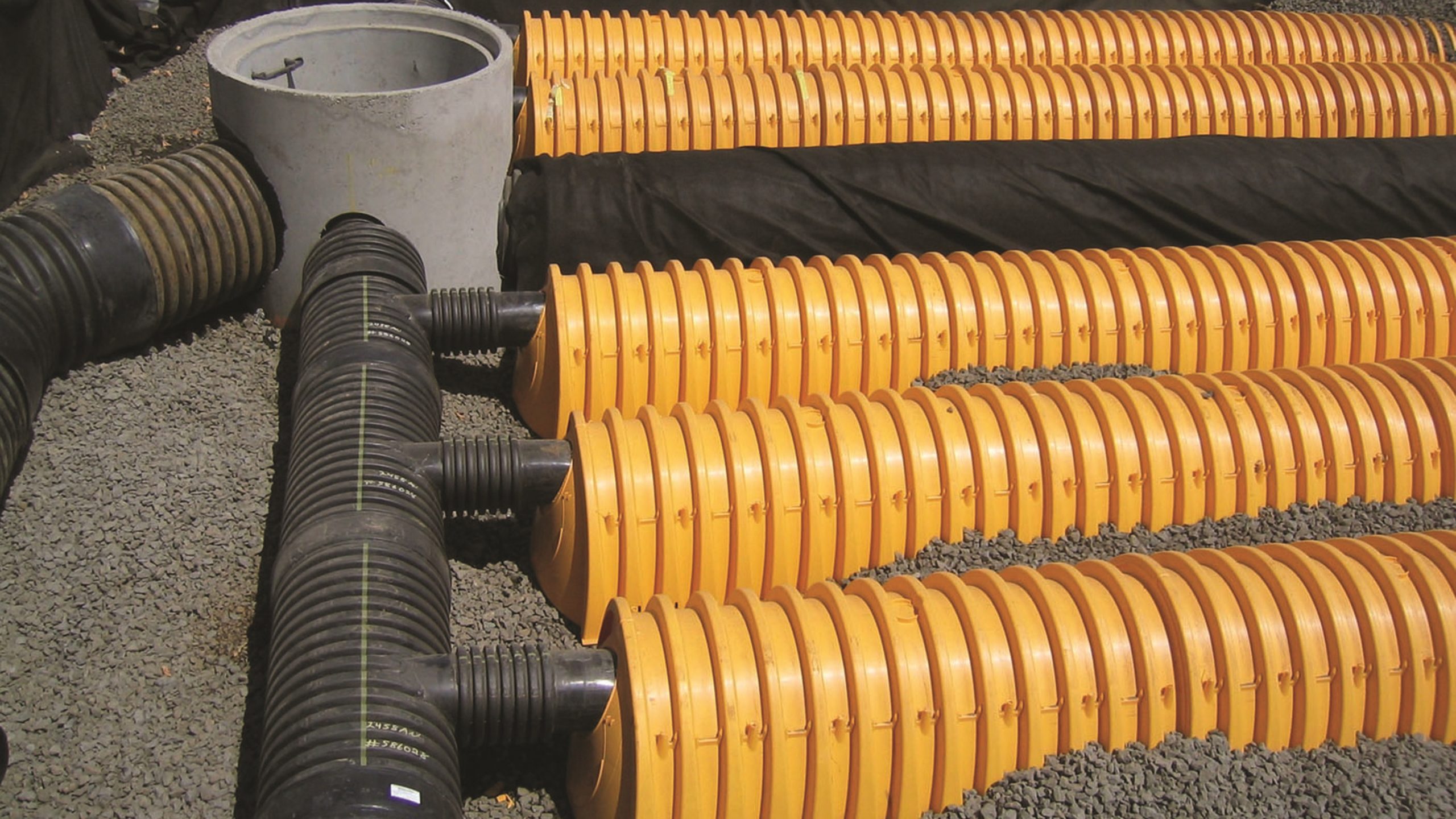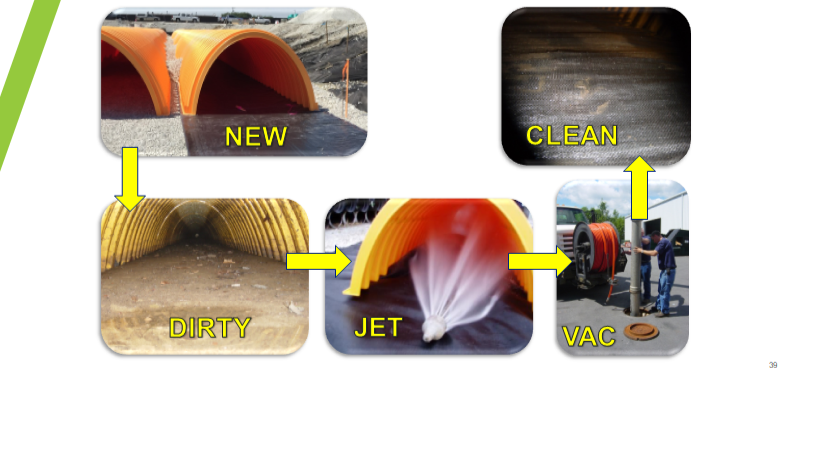
A qualified civil engineer, Stuart Crisp has been at the forefront of construction and a specialist in drainage systems for over 35 years. He has contributed to the development of numerous British and International Standards and industry specifications and was a member of the project steering group for CIRIA C753 The SuDS Manual.
In this series of regular monthly articles, Stuart considers the different challenges facing designers and installers of below ground SuDS attenuation systems.
This month he covers the subject of inspection and maintenance.
When designing a stormwater attenuation system, sometimes too little attention is paid to cleaning and the costs of ongoing maintenance. System maintenance is essential to ensure that the intended performance is retained throughout the service life, and that the risks of flooding and pollution are avoided.
This vital part of asset management can be overlooked at both the design and procurement stages, as the choice is often based on the incorrect assumption that all below-ground attenuation systems are equally easy and low cost to maintain.
However, this is not the case. For example, because of their structure, stormwater attenuation crates are difficult to get access into the body of the tank for cleaning, and require upstream silt removal to prevent a downstream build-up of material within the tank body. Whilst large diameter pipes are easier than crates to access, they too require upstream intervention for silt and hydrocarbon removal.
Both pipes and crates are therefore dependent on the additional expenditure and maintenance of an upstream silt separation and removal system. If silt gets into the storage tank, it can compromise the flow path and reduce the storage volumes – eventually causing the whole system to fail.
But that’s not all. Silt particles can carry pollutants and if these get into the storage tank, they may flush downstream and result in water quality breaches, pollution, and fines.
Crates and pipes, therefore, depend heavily on expensive upstream pre-treatment systems which, together with the attenuation tank, require regular inspection and maintenance. Conversely, the ADS StormTech stormwater attenuation system may not require additional upstream pre-treatment, therefore reducing capital and operational costs.


This is because ADS StormTech is engineered to provide an efficient, durable, low maintenance solution for commercial, residential, industrial and infrastructure installations. A key part of this is the unique Isolator Row, a ‘free’ built-in water quality treatment device designed to remove silt, sediment and polluting material flushed off the surface during rainfall. Isolator Row is “sacrificial”, meaning that other StormTech chambers within the system are protected from solid particles and pollutants in the runoff entering, and they will not require any cleaning during their service life. This keeps maintenance to a minimum. Furthermore, Isolator Row has been independently tested by universities and respected industry bodies, including NJCAT and validated to remove over 80% of Total Suspended Solids (TSS) plus metals, hydrocarbons, phosphorus, nitrogen and other surface water pollutants. Isolator Row, as an integral part of the StormTech system, is recognised by many authorities as a water quality treatment device.
After many years of successful use in over 40,000 installations worldwide, Isolator Row has been proven to need cleaning on average once every 3-7 years, depending on the nature of the installation, using standard sewer cleaning equipment, saving asset owners both time and money in stormwater system maintenance.
This article has been provided by Stuart Crisp at Advanced Drainage Systems – visit adspipe.co.uk



